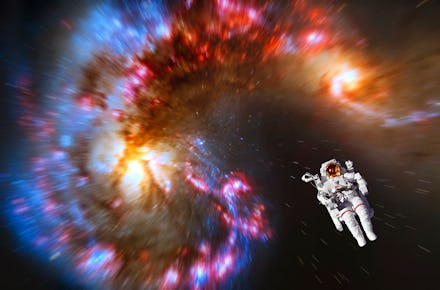9 Ways NASA Has Changed Your Life That You Probably Didn't Know

Thirty years after Neil Armstrong first walked on the moon in 1969, only half of Americans remembered his name.
By the late '90s, a Gallup poll showed 55% of Americans felt NASA initiatives weren't worth the money. Almost one-tenth of the country wanted the space program eliminated altogether. Even in 2015, as the U.S. readies itself for the 2016 election, NASA is facing massive cuts to its perpetually diminishing budget. The GOP alone sought to cut at least $300 million.
American enthusiasm for space travel wanes — but it doesn't have to. These innovations, which came to fruition because of space exploration, are nine reasons why.
1. Satellite TV
Right off the bat in 1958, NASA created Explorer 1, the first U.S. satellite, to study cosmic rays. Four years later, NASA launched the Telstar satellite, best known for transmitting a television signal of John F. Kennedy from the Andover Earth Station in Maine to the Pleumeur-Bodou Telecom Center in France. While it didn't have the power or the capabilities of satellite television as we know them today, it changed how we experience almost all of our news and entertainment. Telstar was also the first-ever privately sponsored space launch, paving the way for Elon Musk's SpaceX company 50-odd years later.
2. Solar power
NASA's Environmental Aircraft and Sensor Technology program aimed to create a group of unmanned aerial vehicles (drones) powered by solar energy in order to stay high in the sky and perform long-duration earth science experiments. Even though the program disbanded in 2003, it was the impetus for those blue crystal silicon solar panels powering everything from calculators to houses.
3. Artificial limbs
The leaps and bounds made in artificial limb technology are talked about widely for both their military and medical implications. None of it would have happened without NASA's need for artificial muscle systems for use in space — specifically, in missions outside vehicles.
4. Memory foam
NASA originally created temper foam in the '70s to make pilot and passenger seating more comfortable and crash protection more efficient. Now it's the fan favorite for finicky sleepers and more comfortable football helmets.
5. The Hubble Space Telescope
Before Hubble launched in 1990, we couldn't see anything in space not detectable from the ground. Even then, the Earth's atmosphere is so full of stuff — clouds, water vapor, all kinds of gas — that getting a good image of the solar system proved to be a pain. But thanks to Hubble's powerful resolution, and its orbit beyond Earth's atmosphere, it unveiled some of the most beautiful and informative images of space we can now see with the naked eye — and paved the way for more powerful telescopes, like the brand new James Webb Space Telescope, able to push humanity into deeper understanding of the universe.
6. The International Space Station
Many space stations of the past failed colossally. Russia launched Salyut 1 in 1971, which failed in less than a year. NASA launched SkyLab in 1973, which failed in less than two. Mir, Russia's second attempt, stayed up for 15 years, burning out in 2001. But the International Space Station, in orbit since November 2000, leads the charge for the future in space travel. Since inception, the ISS has hosted more than 200 people from 15 countries, and still sees regular missions to its place in orbit. Currently, U.S. astronaut Scott Kelly and Russian cosmonaut Mikhail Kornienko are aboard the ISS, undergoing a year-long mission in space — the latest attempt to test humanity's resistance to the perils of a mission to Mars.
7. The joystick
Since the days of Atari and Nintendo add-ons, the video game joystick has shrunk down to a tiny swiveling pad on a handheld controller stuffed with other buttons. But the original joystick was a multidirectional rod on the Apollo 15's lunar vehicle, the Falcon module. It looked like something used to blow up fighter pilots, not navigate a cartoon gorilla around a screen. Years after its use in a 1971 moon landing, the original joystick sold for $610,000 at an auction — possibly the most money ever made on a piece of NASA memorabilia.
8. Brita filters
Since NASA reuses all of its water, including wastewater, extra precautions and incredibly advanced filtering systems were a major priority on manned space missions. While the filters we use in our homes aren't quite of the same rocket-scientist caliber, many modern-day households are now equipped with some sort of store-bought water filter attached to the sink nozzle or used as a standalone pitcher. Without NASA's need to recycle, Brita wouldn't be a household name in places with miserable water quality.
9. The moonwalk
If Neil Armstrong had never walked on the moon, spoken those immortal words or showed the whole universe one of humanity's first and best-known space accomplishments, Michael Jackson might have never done his famous moonwalk dance across stages around the world. NASA's 1969 Apollo 11 mission made these two moments in American history possible. Which one matters most? Depends on whom you ask.